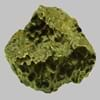Theralite and Tachylite
Definition
Definition
Theralite is a plutonic hylocrystalline igneous rock consisting of augite, olivine, calcic plagioclase and nepheline
Tachylite is a vitreous form of basaltic volcanic glass. This glass is formed naturally by the rapid cooling of molten basalt
History
Origin
Unknown
Iceland
Discoverer
Unknown
Unknown
Etymology
From Greek to pursue
From German Tachylite, from tachy- + Greek lutos soluble, melting
Class
Igneous Rocks
Igneous Rocks
Sub-Class
Durable Rock, Hard Rock
Durable Rock, Medium Hardness Rock
Family
Group
Plutonic
Volcanic
Other Categories
Fine Grained Rock, Opaque Rock
Coarse Grained Rock, Fine Grained Rock, Medium Grained Rock, Opaque Rock
Texture
Texture
Phaneritic
Vitreous
Color
Dark Grey to Black
Black, Dark Brown
Maintenance
Less
More
Durability
Durable
Durable
Water Resistant
Yes
Yes
Scratch Resistant
Yes
No
Stain Resistant
Yes
No
Wind Resistant
Yes
Yes
Acid Resistant
Yes
Yes
Appearance
Veined and Shiny
Glassy
Uses
Architecture
Interior Uses
Decorative Aggregates, Flooring, Interior Decoration
Decorative Aggregates, Interior Decoration
Exterior Uses
As Building Stone, As Facing Stone, Garden Decoration, Office Buildings
As Building Stone, As Facing Stone, Garden Decoration, Paving Stone
Other Architectural Uses
Curbing
Curbing
Industry
Construction Industry
As Dimension Stone, Building houses or walls, Cement Manufacture, Construction Aggregate, for Road Aggregate
Cutting Tool, Knives, Landscaping, Scrapers
Medical Industry
Not Yet Used
Not Yet Used
Antiquity Uses
Artifacts, Monuments, Sculpture
Artifacts
Other Uses
Commercial Uses
Cemetery Markers, Commemorative Tablets, Creating Artwork, Laboratory bench tops, Jewelry, Sea Defence, Tombstones
Cemetery Markers, Creating Artwork
Types
Types
Teschenite and Essexite
Not Available
Features
Smooth to touch
Available in Lots of Colors and Patterns, Clasts are smooth to touch, NA
Archaeological Significance
Monuments
Used
Not Yet Used
Famous Monuments
Data Not Available
Not Applicable
Sculpture
Used
Not Yet Used
Famous Sculptures
Data Not Available
Not Applicable
Pictographs
Not Used
Used
Petroglyphs
Not Used
Used
Figurines
Used
Not Yet Used
Fossils
Absent
Absent
Formation
Formation
Theralite is a fine-grained, hard rock which is a type of metasomatite, essentially altered basalt. It forms with or without crystallization, either below the surface as intrusive rocks or on the surface as extrusive rocks.
Tachylite is a fine-grained, hard rock which is a type of metasomatite, essentially altered basalt. It forms with or without crystallization, either below the surface as intrusive rocks or on the surface as extrusive rocks.
Composition
Mineral Content
Augite, Olivine, Plagioclase, Pyroxene
Feldspar, Olivine
Compound Content
Aluminium Oxide, CaO, Chromium(III) Oxide, Iron(III) Oxide, Potassium Oxide, MgO, Sodium Oxide, Silicon Dioxide, Sulfur Trioxide
Fe, Mg
Transformation
Metamorphism
Yes
Yes
Types of Metamorphism
Cataclastic Metamorphism, Contact Metamorphism, Hydrothermal Metamorphism, Impact Metamorphism, Regional Metamorphism
Burial Metamorphism, Cataclastic Metamorphism, Contact Metamorphism, Hydrothermal Metamorphism, Impact Metamorphism, Regional Metamorphism
Weathering
Yes
Yes
Types of Weathering
Biological Weathering
Biological Weathering, Chemical Weathering, Mechanical Weathering
Erosion
Yes
Yes
Types of Erosion
Chemical Erosion, Coastal Erosion, Glacier Erosion, Water Erosion, Wind Erosion
Chemical Erosion, Sea Erosion, Water Erosion, Wind Erosion
Properties
Physical Properties
Hardness
7
5.5
Grain Size
Fine Grained
Medium to Fine Coarse Grained
Fracture
Uneven, Splintery or Conchoidal
Conchoidal
Streak
White
Vermilion
Porosity
Highly Porous
Less Porous
Luster
Waxy and Dull
Resinous
Compressive Strength
Not Available
206.00 N/mm2
8
Cleavage
Non-Existent
Not Available
Toughness
1.5
Not Available
Specific Gravity
2.5-2.8
2.4
Transparency
Translucent to Opaque
Opaque
Density
2.7 g/cm3
3.058 g/cm3
Thermal Properties
Specific Heat Capacity
0.74 kJ/Kg K
19
0.56 kJ/Kg K
22
Resistance
Impact Resistant, Pressure Resistant, Wear Resistant
Heat Resistant, Impact Resistant, Wear Resistant
Reserves
Deposits in Eastern Continents
Asia
India, Russia
Cambodia, Russia, South Korea
Africa
South Africa
East Africa
Europe
Germany, Greece, Italy, Scotland, Turkey
England, Germany, Hungary, Iceland, Scotland, Sweden
Others
Greenland, Mid-Atlantic Ridge
Hawaii Islands
Deposits in Western Continents
North America
Canada, USA
USA
South America
Bolivia, Brazil, Colombia, Venezuela
Not Yet Found
Deposits in Oceania Continent
Australia
New Zealand, Queensland
Victoria
All about Theralite and Tachylite Properties
Know all about Theralite and Tachylite properties here. All properties of rocks are important as they define the type of rock and its application. Theralite and Tachylite belong to Igneous Rocks.Texture of Theralite is Phaneritic whereas that of Tachylite is Vitreous. Theralite appears Veined and Shiny and Tachylite appears Glassy. The luster of Theralite is waxy and dull while that of Tachylite is resinous. Theralite is available in dark grey to black colors whereas Tachylite is available in black, dark brown colors. The commercial uses of Theralite and Tachylite are cemetery markers, commemorative tablets, creating artwork, laboratory bench tops, jewelry, sea defence, tombstones.










